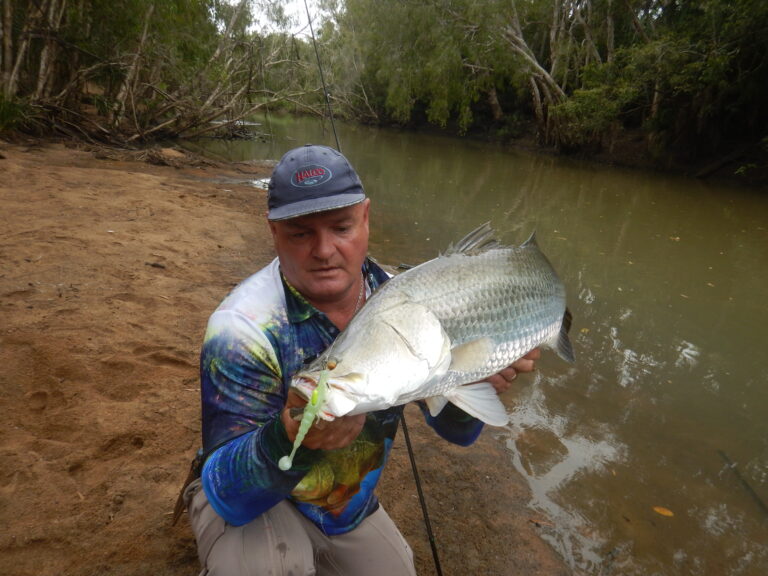Lure Size, Colour and Contrast – By David Hodge
Each and every angler has their own personal favourite colour, and that is that one that we tie on when it’s a bit quiet. New and shiny or old and banged up, doesn’t really matter as long as the colour scheme, model, depth etc is identical to the one that caught the most fish last time, and the time before. We often see when a certain lure has been discontinued, a rush from followers to grab the last of its kind. It’s like they’ll never catch a fish again if they don’t have that one, ‘old faithful’. Now, I’m not saying there’s anything wrong with that at all, and being successful is all about having confidence in what you’re throwing and there’s half the battle won.
For those who haven’t yet found their ‘old faithful’ the decision might not be quite as cut and dried as one might think. I mean, what about water colour, and then overcast days. What about the tannin stained waters towards the end of the wet runoff, which one works best then?
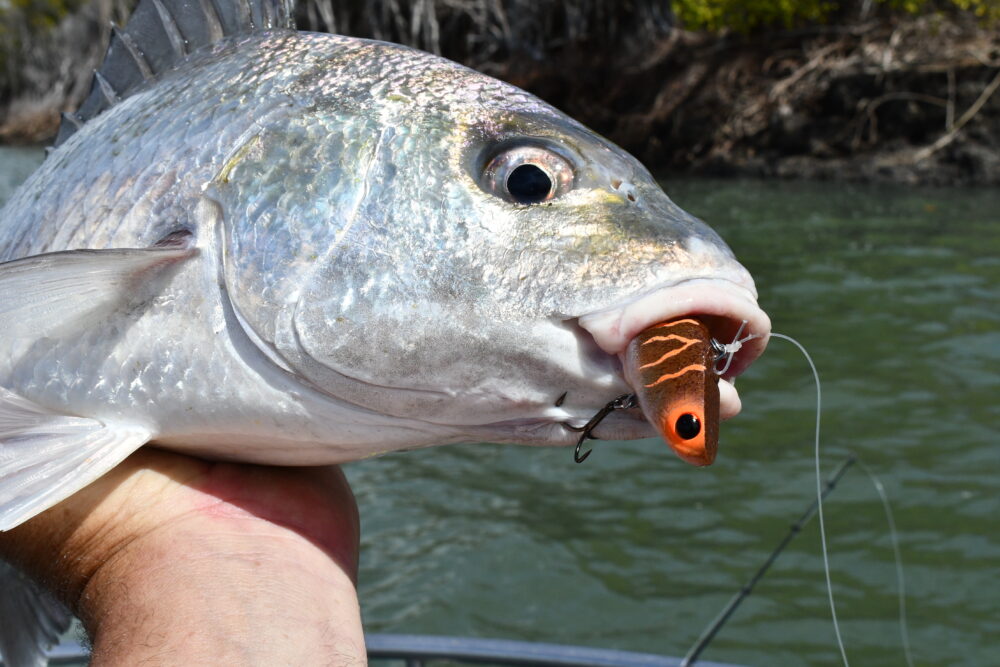
UV stripes like the ones on this 60mm Atomic Semi hard work well in deep water on species such as grunter, barra, fingermark etc.
What about the different types of colours and their most obvious distinctive difference that makes them stand out more so than another. Is it the reflection, the contrast aggression stripes or maybe something a little more scientific such as UV active paints that are only visible to an angler with the use of a black light, or UV torch, but easily distinguished by a fishes eye. Then again, it could be a holographic finish that has depth and real scale affect. Again, it’s an anglers perspective that will draw them towards a particular colour. That is of course, unless you read magazines such as Fish and Boat that has each and every angler giving our own opinions on what works best for us, and then exploring these options for yourself. I’ve seen plenty of fish caught on a colour I wouldn’t even give a second glance, and personally wouldn’t be confident throwing.
Personally, I use many and varied finishes, colours, and I must stress that this is only my opinion, and what has proven to work best for me. I mean there are other considerations such as rattles and frequency which will have an angler testing them in the shop before purchasing, just to make sure it has the same sound as “old faithful”. In complete contrast to this is the fact what many will choose nothing but timber lures, such as the Tilsan Barra, and they have no rattles at all but produce the goods for certain anglers almost always. There is of course the realistic analyst in all of us that says, if that’s all you’re throwing, that’s all you’ll catch fish on, so obviously that would be the most productive for that angler.
My personal approach.
In clear situations like neap tides, winter and windless days that allow the sediment to settle in the water column, I’m a big fan of neutral or natural colours, and being able to be seen from a greater distance, don’t need that standout colour scheme in order to be seen. In a hard body, a holographic or reflective colour that reflects light, as a bait fishes scales would, has a certain appeal for me as does a sparkle flake added into a soft plastic to do the same. I run with this theory on divers, surface and soft plastics, and has always seemed to have a relatively consistent results, but I’d not believe there is one lure that will cover all circumstances. Having the options on hand, and the willingness to change from routine is when you start to find new potential favourites, and ours often change from season to season. All of those old sayings like, ‘If it ain’t chartreuse, it ain’t no use’, ‘If you’re using white, you’ll be right’, ‘Red lures for red fish’ all have relevance at times, but not always. As much as the new finishes on lures are amazingly realistic, some of the very first lures ever made started with colours that are still as effective as the day lure fishing started. White body with a red head is a classic example of the most basic colour schemes producing the goods consistently, and has been around as long as the sport of lure fishing itself, but it still works just as well, and I believe always will. Some say the red head signifies a stressed or injured baitfish which spells easy pickings for a predator, I personally believe it to be the contrast more than anything, but again this is only my theory.
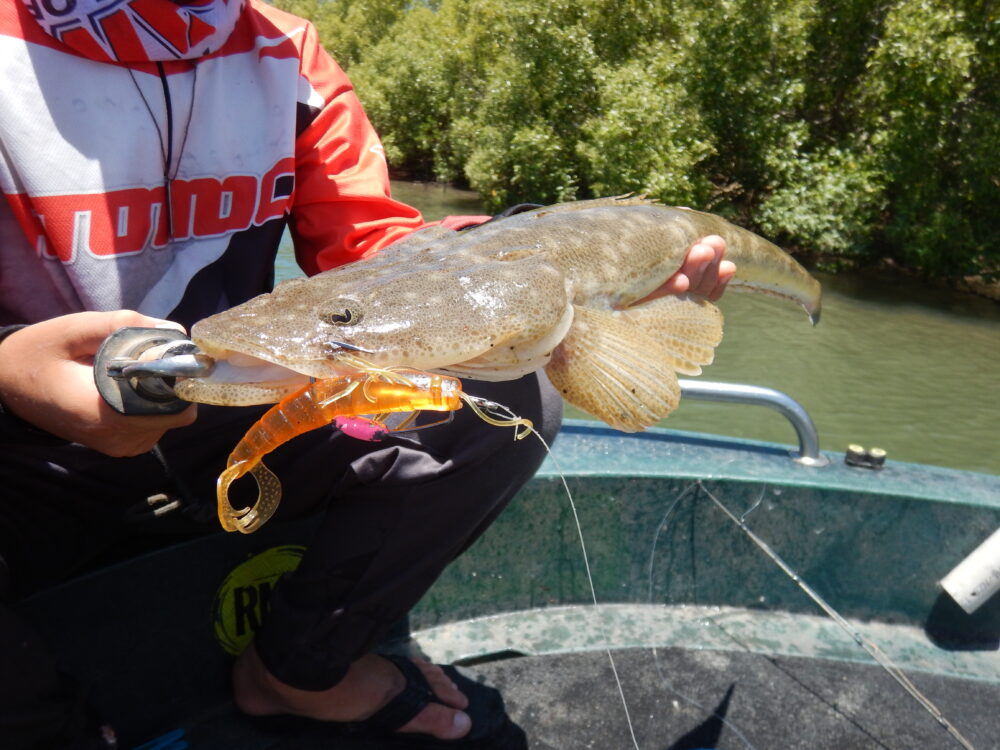
When the water clears, natural colours are hard to beat, but that all important UV Hot spot remains no matter what.fl
Of course rattles etc come into anglers analysis of a suitable lure for their purposes, and again is personal, but I feel that subtle rattles combined with the hooks and split rings rattling away do create enough sound to draw attention in dirty waters. Ultra Violet accents on lures are, in my opinion a very important addition to a colour scheme on a lure, with subtle spots and lines being best in clear water and higher amounts for dirty water. With a UV light ray penetrating 70% deeper into the water column than a normal light ray, it makes sense that a lure will stand out in dirty water from a greater distance.
With soft plastics the same principals are relevant, and many of our most successful colours glow like a demon under a UV torch. Additives are more easily applied to the soft plastics and the contrast just as important. Self applied accessories such as Quick Coat worm dip allow an angler to apply just a dot here and there, a complete tail dip, or as much as you like. Personally I’m a big fan of adding colour to the moving parts of a plastic. For example an Atomic Prong, one of our favourite jack and barra lures has a flapping tail design and these are the bits we alter. As far as actual colours go, I like green accents in clear water and pink in dirty. Again there’s no scientific evidence to support these choices, just percentages and strike rates for us.
It is important to remember that the Quick Coat will only penetrate the latex and rubber based materials, and RST types won’t absorb the dye. This is where the Protec Powder Coat comes into play, and while it may not be the actual soft plastic that gets the treatment, it’s the powder coated head weight or lead weight on a weedless hook that cops the coating. This creates what we refer to as a ‘Hot Spot’, and adds that all important contrast between body and plastic that distinguishes the lure from its surrounding colours. Again, it’s UV active and in our minds makes a huge difference to our strike rate. An extremely tough and durable coating, it can chip if cast into rocks or when a jack bites down hard on the lead. Luckily it can be reapplied if you have a hectic day without losing the hook, but you do lose some coating.
Luminescent lures and colourings seem to be the most effective in exact opposites to where we originally thought they’d work best. In my mind, I believed that the Lumo’s would work best at night or in dirty darker waters where they would stand out like dogs……..ears. In actual fact though, it’s the clearer water scenarios where they absolutely kicked arse, but why I have no idea. It’s just another unexplainable pattern that has emerged from spending thousands of days on the water. One theory we work on for the contrast is to make the addition of either Quick Coat or Protec as stark of a contrast as possible to the lures body colour, and an example is chartreuse green powder coat on the lead weight when rigged on say a bright pink or orange lure colour, or pink against a green body colour. Bright orange works well when contrasted against a white plastic body also.
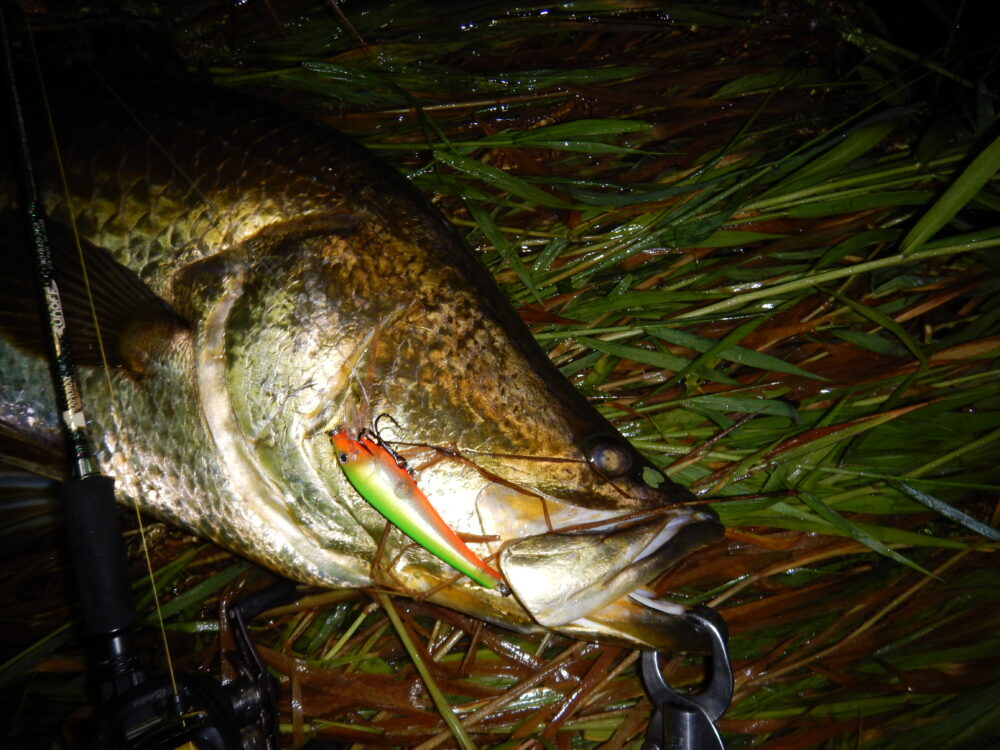
The Pale almost white sides on this lure work extremely well on darker nights that have little or no moon.
Night time.
The more illuminated lead up to, and the few days after, the full moon in comparison to the dark of the moon sees another situational scenario that alters our lure choices. With the moon above, a darker lure seems to silhouette the best, but when that back light disappears over the next couple of weeks, we change to contrast colours such as white with black stripes. Obviously, UV has no impact here as there’s no Ultra violet light of a night.
Size.
Probably even more important when talking larger lures, contrast is even more-so for the smaller lure approach making them stand out from further away. There are several approaches experienced angers take towards the size of the lure that’s chosen to be cast at a certain species, with the old ‘Big Lure, Big Fish’ being popular, to the opposite small lure analogy of ‘Small lure, all fish’, rationalising that approach with an adage that elephants eat peanuts. In winter time we definitely take the later approach as the fishes metabolism slows, making it hard to digest larger scales and bones making smaller prawns and baitfish more palatable. It may sound weird to some but we often target things like barra’s with tiny three inch Atomic Prongs, Plazo Paddle tails and 3 or 4” Halco Paddle prawns during the colder months with great success. The need to fish these smaller lures on appropriate tackle makes it that little bit more challenging as well. Leaders need to be minimised also and around 20lb is needed to get the most from this approach. Whatever you do though, find a good quality jig head, hook combination, and I cannot fault the Atomic Seeker range that are built on the heavier Gamakatsu hooks.
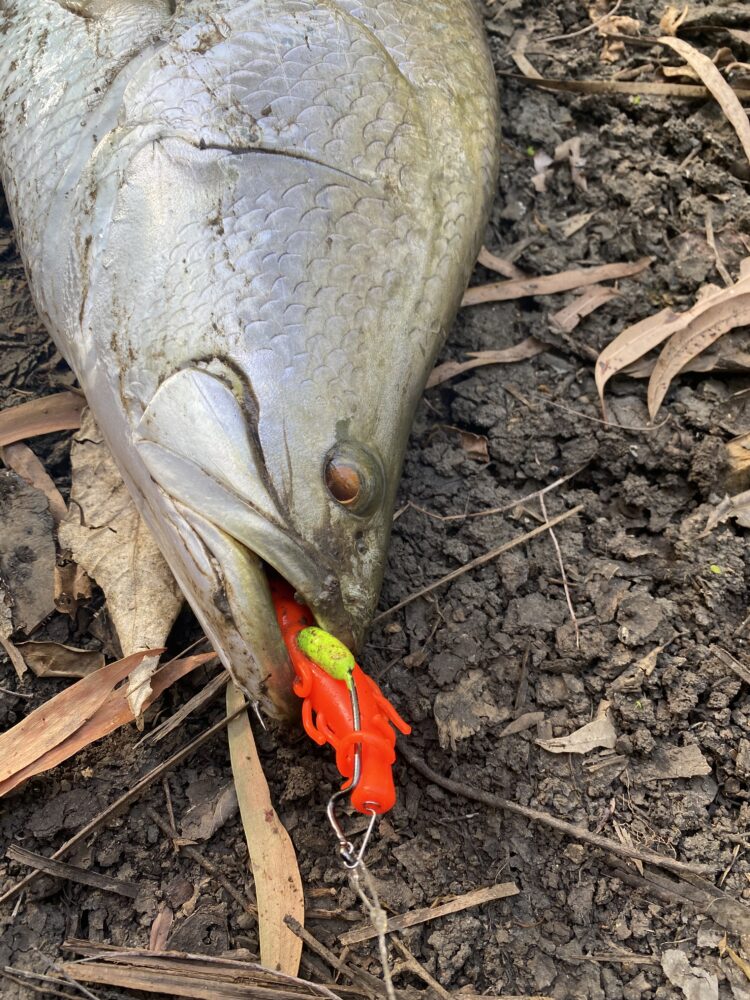
The importance of contrast in dirty water has reinforced its credibility to us many times over the years. Green on orange is a perfect example.
Longer softer rods also help in the presentation and help to minimise the chances of pulling the tiny 1/0 to 2 sized hooks during the battle. Packing heaps of power, but lacking in stamina, barra don’t actually take long to subdue on the lighter lines used in this approach so give it a go before you knock it.
This article was based on some of the most common questions I get in the tackle shop I work in, so I hope this clarifies some stuff for those who have asked our choices and theories behind them. Thanks for the interest and confidence in our opinions and good luck.
Cheers Hodgie.


